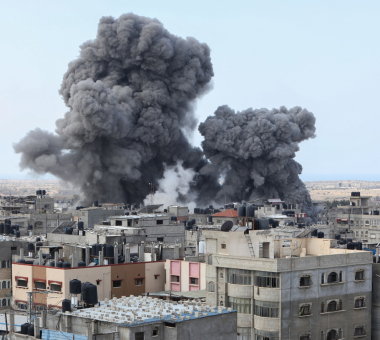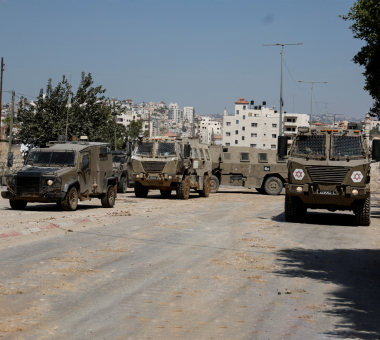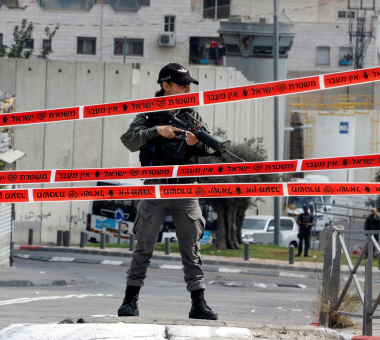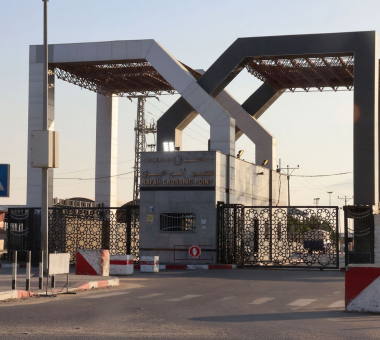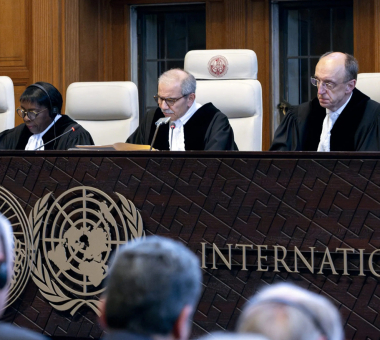Despite the August 15–17 ceasefire negotiations in the Qatari capital of Doha, despite the U.S.-Egyptian-Qatari trilateral efforts to reach a final proposal that would lead to a permanent ceasefire in the Gaza war and the exchange of prisoners and detainees, despite the involvement of high-level representatives from the United States, Egypt, Qatar, and Israel (without direct participation from Hamas), and despite the resolve of the mediators to make the upcoming negotiations in Cairo a success, the ambiguity in the positions of the warring parties raises serious doubts about the outcome and the future of any and all negotiations for peace.
The First Session of Negotiation in Doha
Following the conclusion of the first round of negotiations in Doha, the mediating countries issued a statement describing it as constructive and conducted in a “positive atmosphere.” They indicated that the talks would resume in Cairo based on the terms proposed during the Doha negotiations, and that the technical teams would continue working on the details “including arrangements for implementing the comprehensive humanitarian aspects of the agreement, as well as the details related to hostages and detainees.”
However, those negotiations coincided with six factors related to both the negotiation process and the war and its aftermath.
First, Palestinian President Mahmoud Abbas announcing his intention to visit the Gaza Strip accompanied by the “Palestinian leadership” in a speech before the Turkish parliament on August 15, 2024.
Second, U.S. President Joe Biden’s declaring on August 20 that “Hamas is backtracking from the ceasefire agreement in the Gaza Strip” and U.S. Secretary of State Antony Blinken noting that same day that he had heard directly from the Israeli prime minister that “Israel had accepted the bridging proposal.” Blinken then expressed hope “that Hamas would do the same.”
Third, Hamas declaring later that same day, “Biden and Blinken’s statements are false and do not reflect the movement’s true position, which is keen on reaching an end to the aggression.”
Fourth, Israeli Prime Minister Benjamin Netanyahu’s insistence on the four conditions for a ceasefire: Israeli forces guarding the Netzarim and Philadelphi crossings; the war continuing after the exchange of hostages; Hamas prevented from returning to authority in the Gaza Strip and control of it not transferred to the Palestinian Authority (PA); Israel decides which Palestinian prisoners will be released and where they will live once released.
Fifth: Secretary of the Executive Committee of the Palestine Liberation Organization and Civil Affairs Minister Hussein al-Sheikh stating on August 20 that the U.S. administration is responsible for the failure to reach an agreement to end the war and that Israel is seeking to release detainees and continue the war.
Sixth, the continued escalation of the field situation in the Gaza Strip and the north; ongoing Israeli intelligence operations in the heart of the Gaza Strip, including the recent retrieval of six bodies of Israeli detainees from the Khan Younis area on August 20; and ongoing anticipation of an Iranian response to Israel’s assassination of Hamas Political Bureau Chief Ismail Haniyeh.
What’s Next: Post-Doha Assessment
In light of the above factors, the chances of success do not seem high, at least with regard to reaching a comprehensive agreement when negotiations resume in Cairo. However, the American insistence on continuing the negotiations, along with the seriousness of the Egyptian and Qatari mediators, might push the parties towards achieving a temporary humanitarian ceasefire.
A temporary ceasefire would enhance the prospects for Vice President Kamala Harris in her campaign to win the presidency in November. It would also not conflict with any of the four conditions set by the Israeli government. In addition, Hamas has shown flexibility towards a temporary ceasefire, especially considering the anticipation of responses from Hezbollah and Iran, both of which involve highly complex calculations.
On the other hand, the PA is attempting to leverage the current situation to improve its position on multiple fronts. This includes dealing with Israel’s rejection that it has any official role in managing the Gaza Strip after the war ends, as well as the lack of significant progress in its internal reconciliation with Hamas. Additionally, the PA faces ever-increasing financial and security crises in the West Bank.
This context explains Abbas’s speech before the Turkish parliament and his intention to visit the Gaza Strip as his attempt to engage in the Gaza conflict through Turkey and its strong relations with Hamas. In both cases, the PA aims to achieve a political gain.
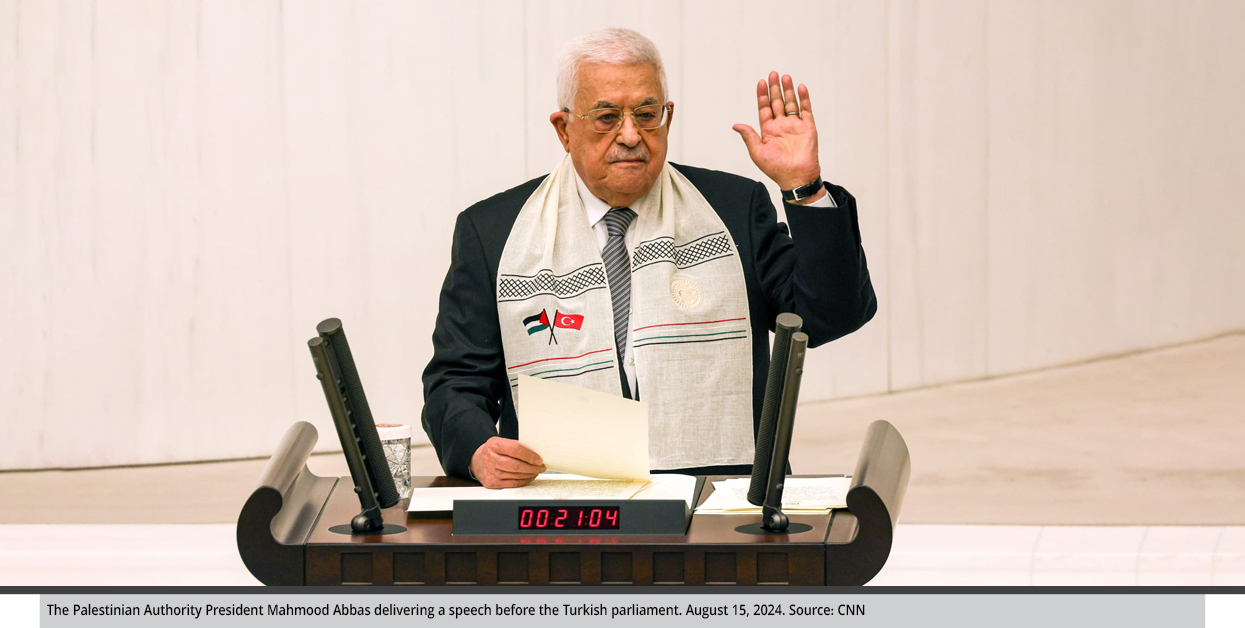
If Abbas’s visit through the northern border of the Gaza Strip succeeds, it would be considered a political success. Israeli approval would implicitly signify acceptance of a post-war role for the PA in managing the Gaza Strip, thus strengthening its position domestically as well as regionally and internationally.
Conversely, an Israeli rejection of the visit would not necessarily embarrass the PA. In fact, it could give the PA a political and media advantage by highlighting the lack of a future role tied to an occupying force. This aligns with al-Sheikh’s assessment that “the Israeli side is expected to reject President Abbas’s visit to Gaza, and we have other scenarios in case of rejection.”
Finally, the future of the ceasefire negotiations and the gaps between the parties have not yet reached a level that would end the war on Gaza. This is due to the Israeli government’s positions and new conditions based on the progress of the Israeli military on the ground, and the insufficient influence of the Biden administration on Israel to make concessions on points of disagreement. In addition, the negotiations are being conducted in an atmosphere of mutual distrust regarding each side’s commitment to implement what has been agreed upon.
The bottom line is that Israel fears Hamas rebuilding its strength in Gaza while Hamas fears a new occupation of Gaza similar to pre-2005. Therefore, whether the negotiations falter or succeed, they are unlikely to provide a definitive solution to the war, making a temporary humanitarian ceasefire more probable, after which both sides will most likely and most unfortunately resume their military operations.
Keep in touch
In-depth analyses delivered weekly.

Related Analyses:







